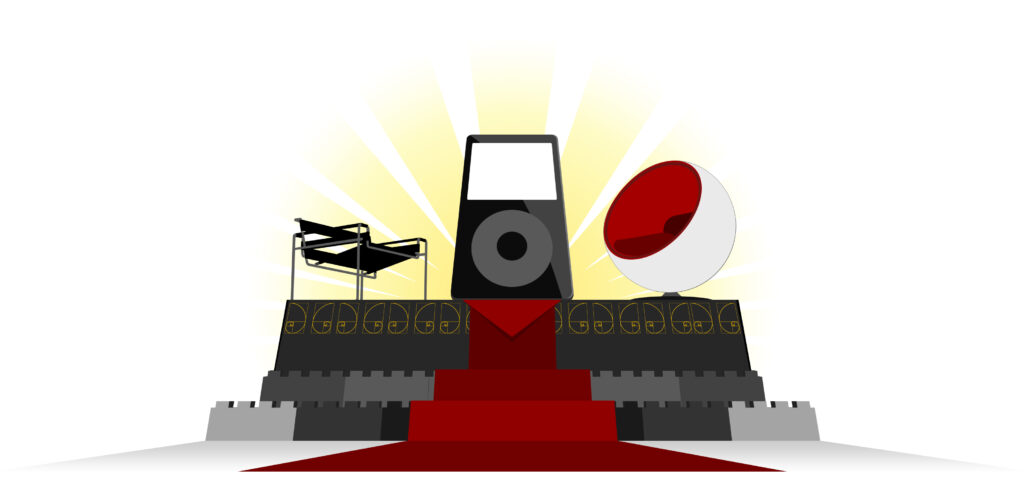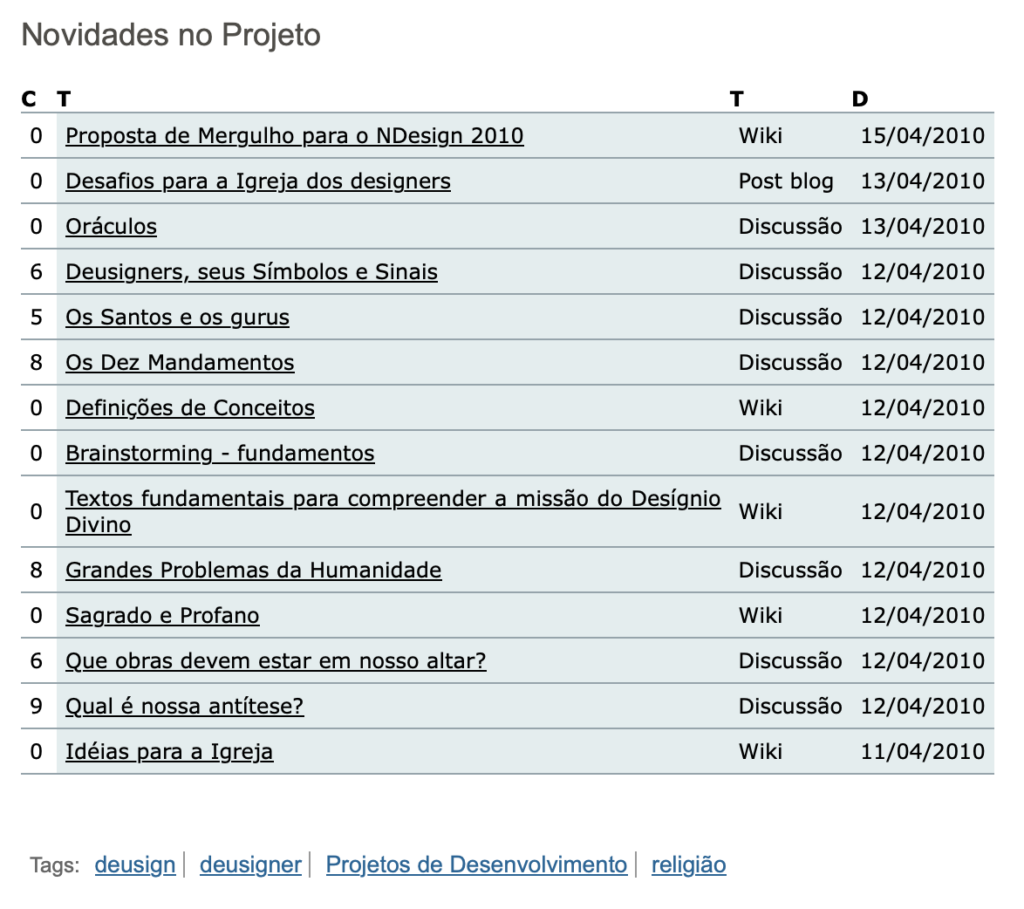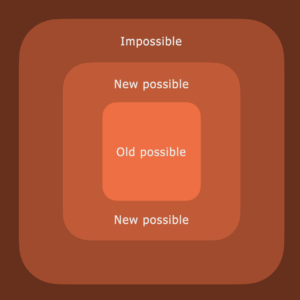The Church of the Divine Design is a provocative design fiction project developed at Faber-Ludens Institute for Interaction Design. This initiative humorously critiques and explores the role of design and designers in contemporary society by parodying the rise of Protestant work ethic and corporativism in Brazilian design practice. It seeks to engage the public in a playful yet critical discussion about the influence of design culture.

Method
Inspired by the proliferation of new evangelic churches in Brazil, the project was conceived as a satirical “church” encouraging everyone to become a designer. The project invited open participation and collaboration by utilizing a public website with wiki documents and discussion forums. Building upon the concept of Design for Debate, the project was announced on a Brazilian interaction design mailing list, it received a mix of responses ranging from playful to critical, ultimately engaging ten volunteers, primarily students from Faber-Ludens.

18 Commandments of the The Church of the Divine Design
The design commandments of The Church of the Divine Design are a satirical and critical take on the principles and dogmas often found within the design community. These commandments serve as guidelines for designers, but they are presented humorously and exaggeratedly to provoke thought and discussion about the values and practices of the design profession.
- Become a Deusigner
- Do something with a purpose
- Practice sincerity
- Always strive to improve your relationships with others and the quality of the products or services provided, being sincere with yourself, which means having the ability to self-assess.
- Become a manifestation of the universal Projectual Will
- Be an instrument and agent of the Great Designer in His Great Project
- There is no right or wrong, no good or evil, when you do what needs to be done.
- Do not design for others as you would for yourself
- Plan everything
- Be extremely perfectionist
- Less is more
- Define the problem clearly
- Do not reinvent the wheel
- Question everything, always, constantly
- Reinvent the wheel, the paperclip, as YOU would
- Respect others’ brainstorming as you would like them to respect yours
- Create, dive in, travel through the chaos that will allow the birth of organization
- Exercise dissatisfaction and discontent with current methods
Liturgy
The liturgy and rituals of The Church of the Divine Design are primarily a form of satire, critiquing the reverence and almost religious fervor with which society sometimes regards design and designers. By framing design practice in a religious context, the project humorously highlights the sometimes dogmatic and uncritical attitudes within the design community. Rituals and liturgies are engaging and memorable, making them effective tools for provoking reflection and discussion. By participating in these rituals, individuals are encouraged to think critically about the values, priorities, and practices of the design profession.
- Sermon
- Moment of introspection for Insight
- Collective brainstorming session, ending with simultaneous shouting so that ideas can be expressed.
- Prototyping with wheat flour dough
- The most recurrent idea and shape is chosen for the Oven
- The perfect shape is baked
- The participants eat their universal host and rejoice
Worldview
By creating a division between sacred and profane, the project emphasizes the high regard and almost sacred status of some design objects and principles within the design community. This mirrors how products or concepts are often treated with reverence, akin to religious artifacts or dogmas. The sacred/profane division symbolizes the ideological constructs within the design profession. It highlights how design ideologies can create hierarchies and distinctions, influencing designers’ thinking and work.
Sacred things
- Design
- Imperfect circle
- The Light
- Chatting on the grass
- Simplicity
- Holy Intuition
- The Sacred Portfolio
- Mussolini
- MacBook
- Nature
- Craftsmanship
- Knowledge
- Brainstorming
- Live music
- Insomnia
- General hug
- Identity
- Principles of optics
- Experimentation
- Listening in silence
- Watching a plant grow
Profane things
- Use
- Spreadsheets
- Gambiarras
- Copies
- Waking up early
- Loud noise
- Geometry
- Numbers
- Quantitativism
- Electronic music
- Trash
- Insomnia
- Occurrence of unknown errors
Impact
The Church of the Divine Design effectively used humor to address serious issues within the design community, challenging the prevailing corporatist and technocratic discourse. It provided a much-needed creative respite among the more technology and methodology-driven projects at Faber-Ludens, emphasizing the importance of a play ethic in design practice. This project is a testament to design fiction’s power in fostering critical reflection and dialogue. It entertained and provoked thought about the societal role and cultural impact of design, embodying the Faber-Ludens Institute’s commitment to exploring the social dimensions of interaction design.
The Church of the Divine Design project was created by Frederick van Amstel and Rodrigo Gonzatto in 2010 and analyzed in an article about the ideology of design fiction in 2013.
References
Gonzatto, R.F; Amstel, F.M.C.van; Merkle, L.E; Hartmann, T. 2013. The ideology of the future in design fictions. Digital Creativity. Vol. 24 (1). https://doi.org/10.1080/14626268.2013.772524

